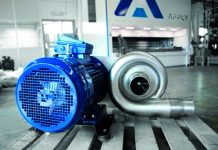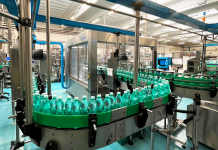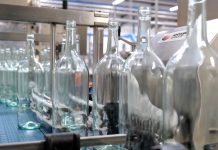 The general definition of sustainability which is still today referred to was given in 1987 by the Brundtland Commission (Brundtland Report, 1987): “Sustainable development is development that meets the needs of the present without compromising the ability of future generations to meet their own needs”. Since then, the criteria of environmental sustainability have been applied to all production fields, including the viticulture and oenology sectors, thanks to the support by the regulation. Sustainable viticulture is increasingly wide-spread and, among other things, is characterized by reduced environmental impact in all vineyard practices. As for the oenological sector, attention is devoted to the sustainability of the winemaking process and wine cellar structure, and therefore in the assessment of their environmental impact. In this regard, the International Organisation of Vine and Wine has recently identified the general principle for an international protocol drafting for the calculation of greenhouse gases in the vine and wine sector. The protocol specifically deals with cork stoppers, for the calculation of the total balance of emissions, since they represent a peculiarity of the wine production, and their use plays a significant role in the sustainable forest conservation (Resolution OIV, 2011).
The general definition of sustainability which is still today referred to was given in 1987 by the Brundtland Commission (Brundtland Report, 1987): “Sustainable development is development that meets the needs of the present without compromising the ability of future generations to meet their own needs”. Since then, the criteria of environmental sustainability have been applied to all production fields, including the viticulture and oenology sectors, thanks to the support by the regulation. Sustainable viticulture is increasingly wide-spread and, among other things, is characterized by reduced environmental impact in all vineyard practices. As for the oenological sector, attention is devoted to the sustainability of the winemaking process and wine cellar structure, and therefore in the assessment of their environmental impact. In this regard, the International Organisation of Vine and Wine has recently identified the general principle for an international protocol drafting for the calculation of greenhouse gases in the vine and wine sector. The protocol specifically deals with cork stoppers, for the calculation of the total balance of emissions, since they represent a peculiarity of the wine production, and their use plays a significant role in the sustainable forest conservation (Resolution OIV, 2011).
 Sustainability of raw cork production
Sustainability of raw cork production
The whole cork chain, from forests to consumers, is based on the regular production of raw cork and, therefore, on an adequate management of the existing cork oak forests. Cork oak forests also play a multifunctional role since they protect the environment against soil erosion and desertification; they preserve biodiversity, and represent an important social and economic factor for resident populations. For this reason, significant efforts have been undertaken, even through European interventions, to maintain and enhance this ecosystem, by promoting both projects for artificial regeneration of cork oaks and criteria of sustainable forest management (Pereira H., 2007). Such criteria must take into account environmental aspects as well as industrial objectives, i.e. the need of disposing of quality raw cork in adequate quantities for the manufacture of cork stoppers for oenological use. Therefore, variables such as productivity, cork growth index, intensity of cork stripping are studied. There are currently several examples of cork oak forests certified for sustainable management, such as Cusseddu-Miali-Parapinta cork oak forest, managed by Agris Sardegna – Department of Cork Research and Forestry and certified since 2005 according to FSC standards (www4.unicatt.it/nato/allegati/art_sugheretacusseddu.pdf).

A standard method to assess the potential impacts of a given product is the Life Cycle Assessment, i.e. the assessment of the potential environmental impact of a given product during all its life phases, from the extraction of raw materials to the final waste processing. As for cork stoppers, a recent study referred to the UK situation analyzed the assessment of cork stoppers compared to plastic and aluminum closures, in order to analyze the environmental impact of the different types of closures (PriceWaterhouseCoopers, 2008). Concerning Italy, an in-depth study was recently carried out on natural and agglomerate cork stoppers manufactured and used in Italy (Ecobilancio Italia, 2010). The analysis of the different indicators in relation to eco-balance (including: greenhouse effect gases emission, primary energy consumption, production of solid waste) took into account three macro-phases of the product life cycle: manufacturing process (from cork oak forest to the finished stoppers); distribution (from manufacturer to customer); end of life (from consumer to disposal). The main results of this study are as follows. Even though the environmental impact of agglomerate stoppers is higher than natural stoppers (use of synthetic binders; more energy needed during production), some general remarks can be referred to both types of stoppers. The most critical indicators are: consumption of primary energy during manufacturing; solid waste and greenhouse gases for end-of-life stage. Figure 1 shows the contribution of each sub-phase to the value of “greenhouse effect” indicator during the whole life cycle of natural cork stoppers. As it can be noted, the phase with a higher impact is the end of life, while during cork growth in forest there is a high negative value linked to the capture of atmospheric CO2 by the cork oak during the photosynthesis process. The manufacturing phase is critical as for the environmental impact of life cycle of stoppers, above all due to the high energy consumptions deriving from Italian electricity production, heavily dependent on fossil fuels. The study finally underlines that, in order to ensure a better environmental sustainability of the stoppers’ life cycle, during production phase, the use of energy from alternative sources should be increased, such as the combustion of cork dust. Moreover, an immediate benefit will derive from recycling cork stoppers at the end of their life: they could be used in the manufacture of shuttering panels. Recently a campaign for separate collection of cork stoppers has been launched, and some regional institutions have already joined it (www.rilegno.org – www.tappoachi.it).
References
Brundtland Report, 1987. Our common future. Oxford University Press (www.un-documents.net)
Ecobilanco Italia. 2010. Ecobilancio di prodotti in sughero. Rilegno. Collana Federlegno-Arredo.
Pereira H., 2007. Cork. Biology, Production and Uses. Elsevier Ed., Amsterdam.
PrinceWaterhouseCoopers, 2008. Evaluation of the environmental impacts of cork stoppers versus aluminum and plastic closures ( www.corkfacts.com)
Resolution OIV-CST 431-2011. General Principles of the OIV Greenhouse Gas Accounting Protocol for the Vine and Wine Sector (www.oiv.int/oiv/info/enresolution)
by Valeria Mazzoleni – Institute of Oenology and Agro-Food Engineering, Università Cattolica del Sacro Cuore



